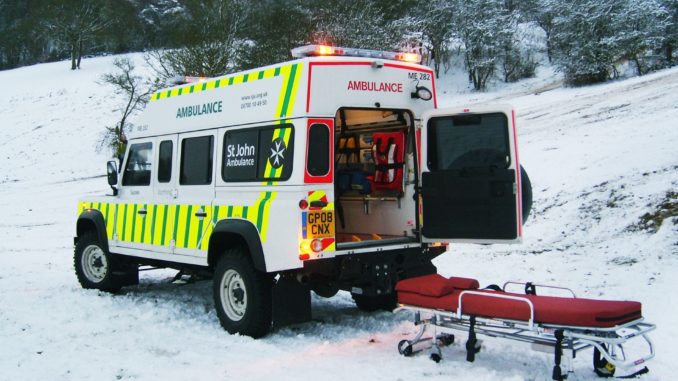
Simple first aid skills can be the difference between a life lost and a life saved and yet, worryingly, just 1 in 10* people have the skills to save a life. St John Ambulance, the nation’s leading first aid charity has teamed up with All About Family to bring you some simple, but life saving, first aid tips.
Winter often brings its own range of slips, trips and injuries and, with this in mind, we’re bringing you some wintery first aid tips.
Sprains and fractures
Sometimes it can be hard to tell the difference between a strain/sprain and a fracture, they all can be painful, tender and swollen. If you are unable to bear weight on the limb, if there is any obvious deformity or have any doubts about the seriousness of the injury then always seek medical advice.
Fractures need to go to hospital, but beforehand, you should make sure the injured person is kept still and the break supported with your hands or by being bandaged (in a sling if an upper limb break, or bandaged to the uninjured leg, if a lower limb break).
In the case of a sprain it can be treated using the RICE procedure (Rest, Ice, make Comfortable and Elevation). The injured part should be rested and supported and, if a recent injury, an ice pack should be applied to reduce swelling, make sure that the ice does not come into direct contact with the skin. Apply a comfortable support to the injured part with soft padding held in place with a support bandage, finally support the limb ion a raised position to help minimise bruising.
How to spot signs of hypothermia
Hypothermia develops when the body temperature falls below 35°C(95°F). The effects of the condition vary depending on the speed of the onset and the level to which the body temperature falls. Moderate hypothermia can usually be completely reversed. Severe hypothermia, when the core body temperature falls below 30°C (86°F) can be fatal. However, no matter how low the body temperature falls, it is always worth persisting with life saving procedures until medical help arrives.
Follow these simple steps to recognise these conditions and to help:
- A casualty with hypothermia may be shivering and pale with cold, dry skin. They may become disoriented, apathetic, lethargic or irrational
- Breathing may become slow and shallow and the pulse slow and weakening
- In extreme cases the heart might stop
- Move the casualty to a sheltered place, preferably indoors
- Remove any wet clothing and provide dry clothing or blankets and cover their head. Don’t give the casualty your own clothes
- If outdoors, provide a layer of insulation between the casualty and the ground and shelter them from the wind
- Call 999/112 for emergency help. If you need to send someone for help, make sure someone stays with the casualty at all times
- If possible, give the casualty warm drinks and high energy foods such as chocolate. Do not give the casualty alcohol as this can make the condition worse
- The casualty must be re-warmed gradually
- Monitor vital signs, level of response, breathing, pulse and temperature until medical help arrives.
For those looking for quick, easily accessible first aid information, the St John Ambulance app is available free on smartphones and the website (www.sja.org.uk) offers demo videos, an interactive game, and lots of free advice. For more information about first aid courses please call 0844 770 4800.
* Research conducted by ICM, February 2014, using a weighted sample of 2000 adults aged 18+.
ICM is a member of the British Polling Council and abides by its rules. Further information at

